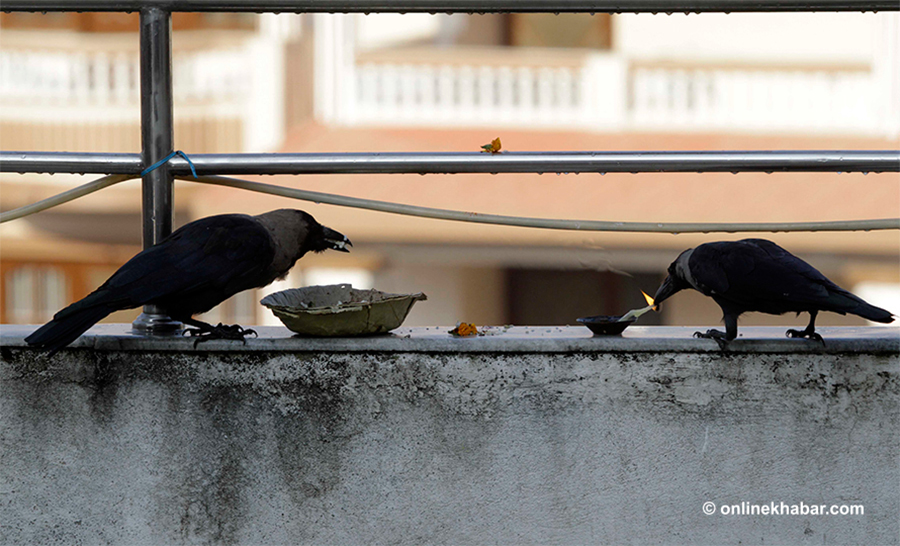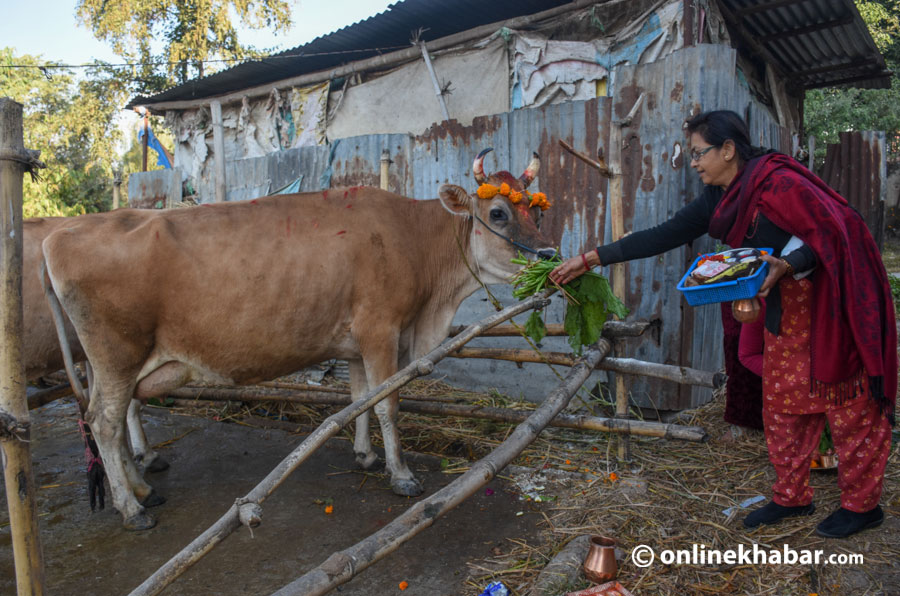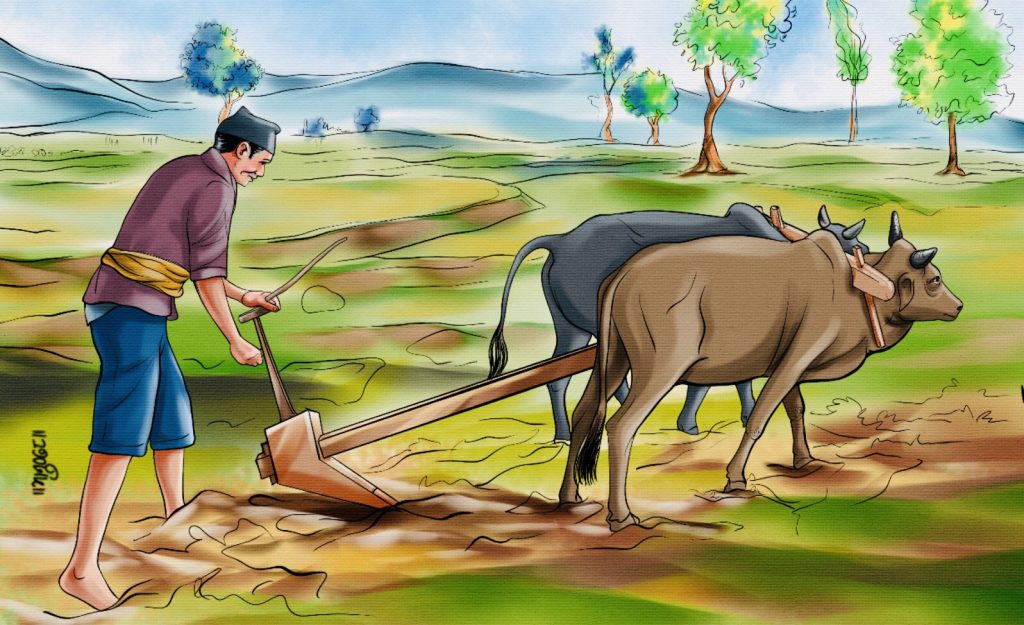
Tihar, also known as Deepawali or the festival of lights, is a vibrant and joyous celebration deeply rooted in Nepali culture. This five-day festival holds great importance as it brings together various traditions and rituals that hold significance in our lives. The festival reflects cultural values and continues to play a significant role, reminding us of love, harmony, and gratitude.
Every crow has its day

Kag Tihar is the first day of the Tihar festival in Nepali culture, and it is devoted to crows. It is believed that they are the messengers of Yamaraj, the lord of death in Hindu mythology. The tradition of giving food to crows during Kag Tihar represents respect and gratitude towards them for their ability to communicate between the living and the afterlife, and it signifies spiritual communication. It serves as a reminder of the cycle of birth and death and emphasizes the importance of maintaining cultural heritage and traditions.
On the other hand, Kag Tihar has ecological importance since it demonstrates the connection between humans and nature. By honouring and protecting all creatures, including crows, balance and biodiversity can be maintained.
Feeding crows on Kag Tihar promotes ecological equilibrium and sustains natural resources. By appreciating the value of environmental conservation and promoting natural balance, society can move towards a more sustainable future. The Kag Tihar celebration, therefore, has significant cultural and ecological importance, which supports the interdependence between humans and the environment.
Celebrating man’s best friend

The celebration of Kukur Tihar is devoted to showing honour and gratitude towards dogs, who hold significant cultural value in Nepali society. Dogs are regarded as loyal companions and caretakers, and Kukur Tihar promotes compassion, kindness, and respect towards animals while promoting harmony between humans and the animal kingdom.
Throughout history, dogs have been connected to deities and considered protectors of the home and family, having a sense of smell more acute than human beings and having the ability to safeguard against evil spirits and negative energies. In rural areas of Nepal, dogs serve as watchdogs, protecting livestock and property from potential harm and offering companionship to those in remote areas. During Kukur Tihar, special ceremonies are performed to acknowledge their unwavering loyalty and protective nature, complete with garlands, tika, and delicious treats.
Currently, Kukur Tihar retains its significance in Nepali society. The celebration highlights the cultural values of love, gratitude, and reverence towards animals, reflecting the need to defend and care for all living beings. Kukur Tihar also gained global attention, reflecting the unique cultural values and traditions of Nepal.
Understanding the spiritual significance of cows

The third day of Tihar, Gai Tihar (Cow Puja), and Laxmi Puja hold great spiritual and cultural significance. Cows embody the goddess Laxmi, who is associated with wealth and abundance in Hindu mythology. Laxmi Puja was initially celebrated by Hindu merchants and traders in ancient India, to seek the blessings of the deity for prosperity and success, which helped to promote trade and commerce. Today, the day is dedicated to worshipping the goddess Laxmi and seeking her blessings for wealth and success in our lives.
Laxmi Pooja played a crucial role in creating social cohesion among people from different communities who came together to celebrate the festival. This helped to foster a sense of unity among the people, which is critical for the development of a strong community. Besides, it also promoted the arts, with artists and craftsmen having the opportunity to showcase their work.
In contemporary society, Laxmi Pooja continues to hold significant importance. It brings people together from various backgrounds, promoting social cohesion and reinforcing cultural values of the exchange of cash/souvenirs among people.
Furthermore, it provides an essential source of revenue for local businesses, with many people buying new clothes, jewellery, and other items during the festival, thus stimulating the local economy. Additionally, the festival promotes charity and giving, with people donating to the less fortunate, which helps to stimulate a culture of giving and social responsibility.
Ox and their role in our society

Goru Tihar, or Ox Puja, falls on the fourth day of the Tihar festival and is a day to honour and appreciate the bullocks’ vital role in the agricultural sector. Oxen play a significant role in farming and cultivation, and Ox Puja acknowledges their strength and hard work.
Govardhan Puja is also observed on this day, where a replica of Mount Govardhan is created with cow dung and worshipped, symbolising the power of nature and protection. The historical and contemporary importance of Ox Puja in Nepali society lies in its recognition of the significant contributions of oxen to the agricultural sector and their role in sustaining rural livelihoods, promoting values of hard work and reverence for nature.
A day for brothers and sisters

Bhai Tika, also known as Tihar Tikka, is the final and most anticipated day of the Tihar festival. It is a special day that celebrates the bond of love between siblings, with a particular focus on the relationship between brothers and sisters. On this day, sisters perform a ritual where they offer tika, which is a mark of auspiciousness applied on the forehead, along with garlands and blessings to their brothers.
This act symbolises their love and wishes for their brothers’ long life, prosperity, and happiness. In return, brothers express their gratitude and affection by offering gifts to their sisters. Bhai Tika strengthens the bond between siblings and fosters harmony and love within families. It is a time of heartfelt exchanges, deepening the sense of togetherness and appreciation for one another.
Tihar celebrates cultural heritage, interdependence with nature, gratitude and respect for birds and animals, and seeking blessings for prosperity and social responsibility. The five-day festival emphasizes supporting local businesses and the arts, promoting unity, sharing love and goodwill, and promoting a culture of giving and social responsibility.
________________________________________________________________________________________________________________
Originally published on November 10, 2023.
























